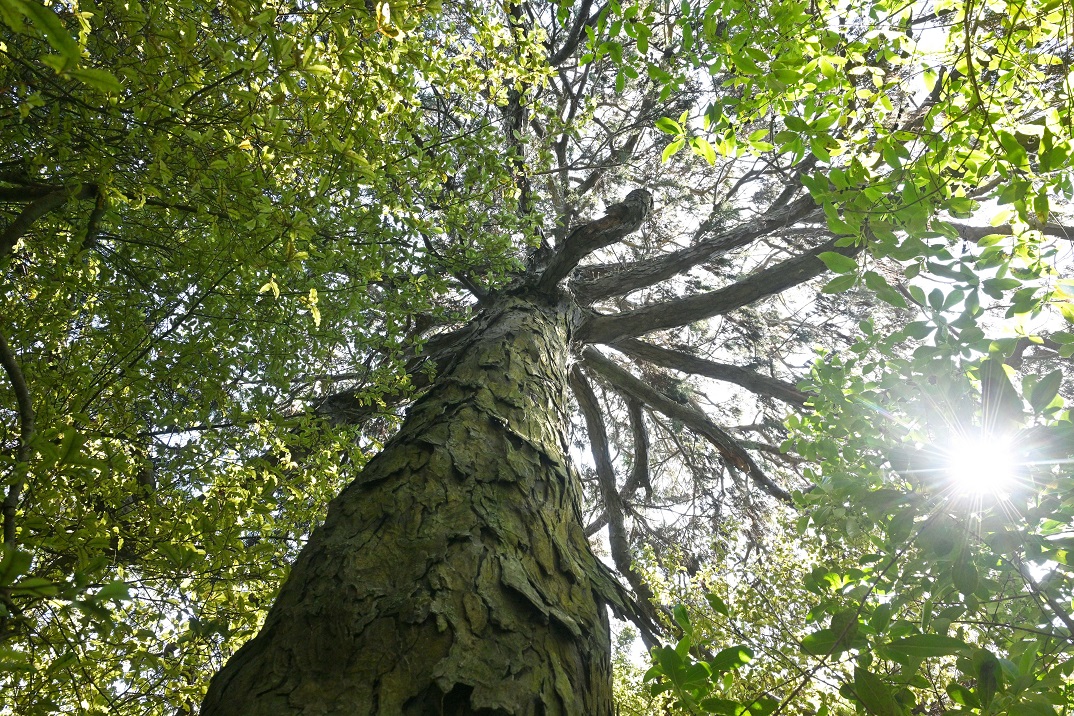
Towering, ancient rimu with graceful, drooping branchlets hold court in the ridge line-to-valley-floor forest. Smaller trees — kānuka, pittosporum, fuchsia, matipo — gather around their feet, while in the canopy tītīpounamu (riflemen) chase insects, tūi serenade mates and ponderous kereru plot arcing courses across the verdant valley kingdom.
It is unrecognisable from four decades ago when Peter Cooke and Anna Moore bought this 4ha property on the northeast flank of Hereweka, Otago Peninsula’s landmark Harbour Cone. Then it was almost-bare, degrading farmland; remnant rimu riding desolate, steep-walled waves of grass pocked with blackberry, gorse and cattle.
However, the couple decided to restore the paddocks to their native forest state. And that is what they have spent the past 40 years doing, although they would say they have done little more than get out of the way and let natural processes take their course.
"We just ... let nature do its thing here. It wasn’t as if it was arduous; nature did its job ... [with] minimal interference from us," Peter says.
Peter, a GP, and Anna, a psychotherapist, bought this piece of land overlooking Hoopers Inlet in 1980, attracted by the 70 rimu left standing when the original forest was cleared. They realised the sheltered, sun-facing property would be a good site for growing trees, so they covenanted half the property in partnership with Queen Elizabeth II National Trust and began rewilding their portion of Otago Peninsula’s distinctive, ancient, volcanic cone.
"There was a bit of seed source here. And nearby, facing our property, is a hill that had 70 years of regrowth .. so that was a source as well; mostly kānuka, pittosporum and fuchsia," Peter says.
Kānuka was vital to the process.
"It’ll grow in grass, and rabbits don’t eat it, sheep don’t eat it. So, it’s the start of the regeneration," Peter says.
"And it will grow through blackberry," Anna adds.
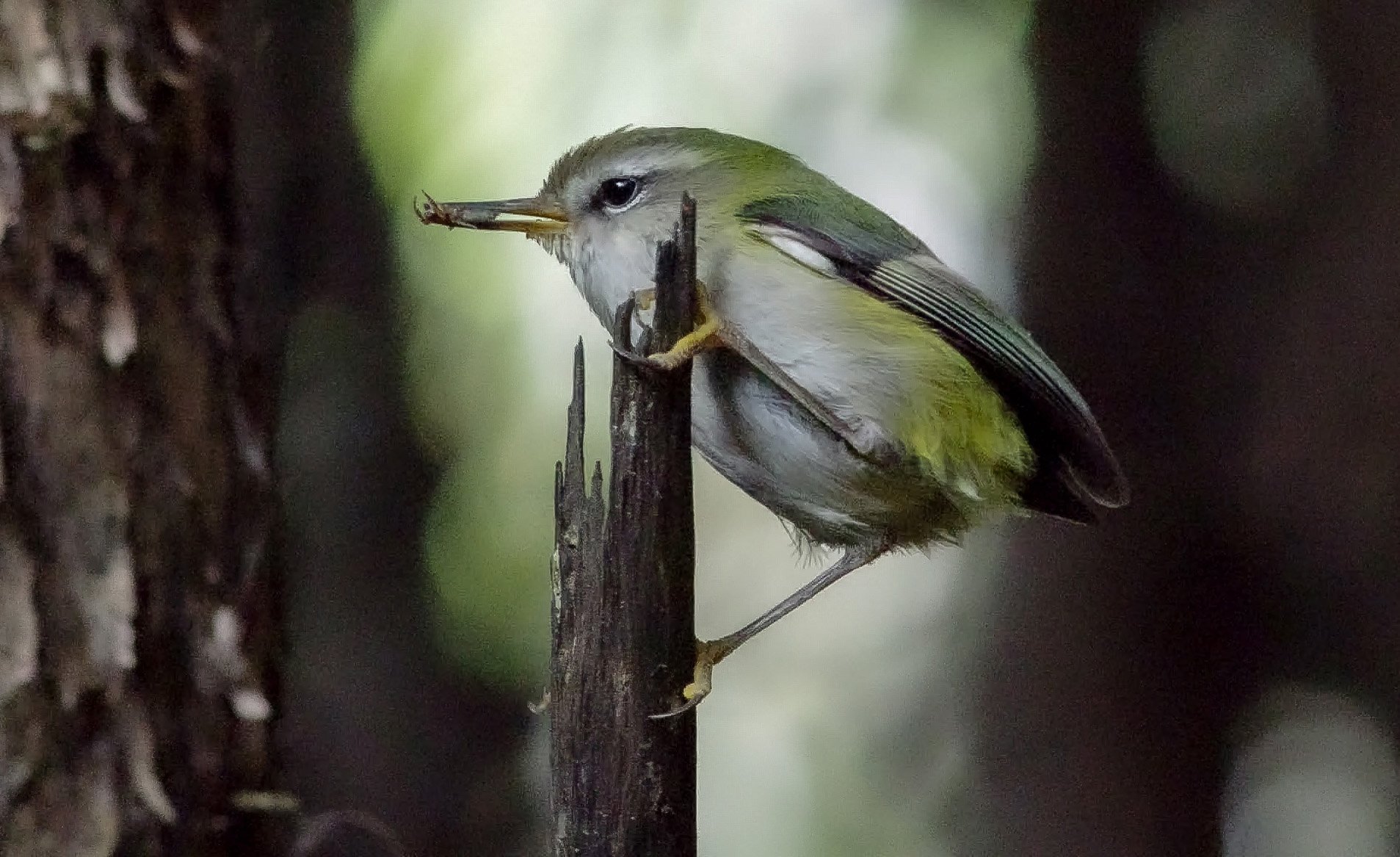
Blackberry is a fast-growing, thorny exotic with an underground lignotuber containing a mass of vegetative buds that will regrow if it is not dug up and removed.
Not wanting to use chemicals, they simply let kānuka seed in, and grow through, the blackberry that was plentiful around the bases of the big trees.
"Gradually over time, it’s taken many years ... [the blackberry] all just died out through lack of light. It got thinner and thinner, less and less vigorous."
The same process has dealt to the property’s gorse.
"So in a way — finding when we left things alone, wonderful things happened — that gave us confidence to carry on doing that," Anna says.
One of those wonderful surprises has been tree ferns springing up on their land.
The previous owner had bulldozed and removed all fern trees from the property. But they began returning when paths were created.
"The silver ferns [ponga, Cyathea dealbata] must like the sterile-ness of the clay because they grew all along the edge of our paths," Peter says.
"Now, in fact, we dig up silver fern and give it to friends and neighbours to put on their properties," Anna says.

Time has provided several new neighbours keen to follow Anna and Peter’s lead.
"We feel very lucky with our neighbours," she says.
"We’re all on the same page and we’re getting this wonderful, really large area for the birds; a corridor of native bush."
Their valley and the surrounding land makes up what is probably the biggest chunk of regenerating bush on the Peninsula, Peter says.
"It’s lovely to see. And the bird life is just amazing now. When we came, there were bellbirds [korimako] but no tūi, no kereru. It took 18 years for a tūi to arrive and 22 years for a kereru to arrive. But now they’re abundant nesting here and have been for maybe 20 years."
Peter and Anna raised four children in the house they built on the property.
"We used to wonder what people did with their children in the city because our kids were always out on the land with us, digging holes, making little paths, sometimes having little fires, all sorts of things," Anna recalls.
And now the next generation are enjoying the regenerating forest.
"Our grandchildren come and make huts in the bush, which is a delight for us to see," Peter says.
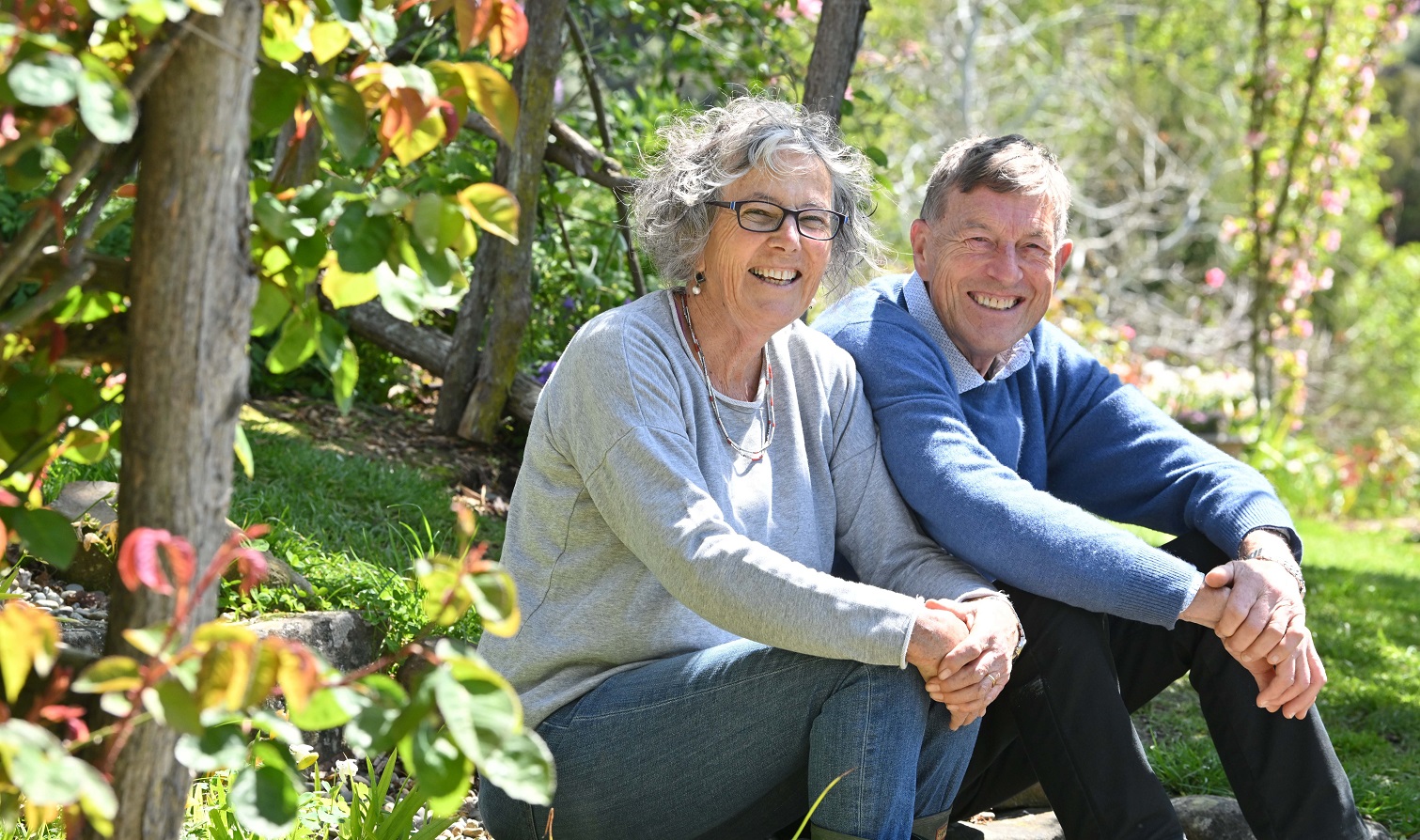
Their extensive garden is open several times a year through the New Zealand Gardens Trust, and also by appointment.
A new public course, Hereweka Track, which includes the property’s rimu-stand ridge, has opened this year.
"It only opened about two months ago.
"It’s been really well used."
And they have built a self-contained, luxury, eco-retreat lodge.
Four and a-half decades on, Anna and Peter look back with astonishment at how well their rewilding efforts have worked.
"In fact, I think we look at it now and it’s kind of, ‘Wow, this has happened’. It never ceases to excite and amaze us," Anna adds.
They also acknowledge the important role played by Shanta McPherson who, like Peter, grew up on the Peninsula.
"Shanta was very knowledgeable about trees and birds and ... how to propagate things and what would grow," Peter says.
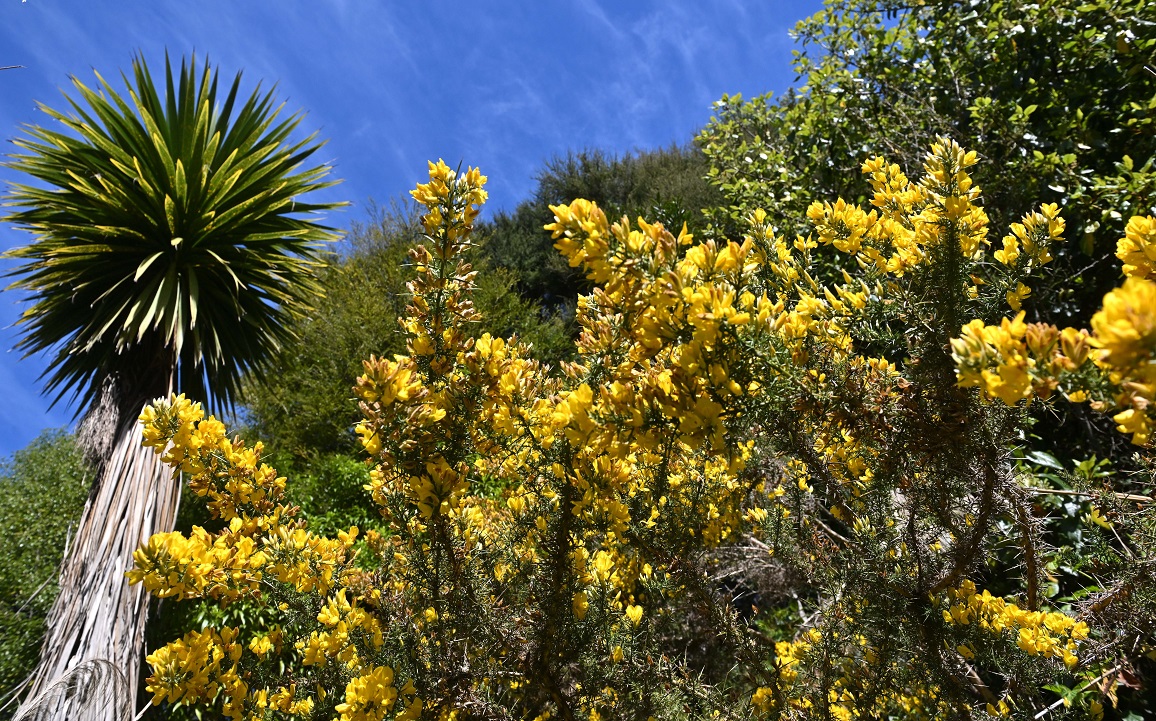
Shanta, for his part, appreciated the couple’s courageous approach.
"I always admired Peter and Anna because they had the ability to sit back and let it happen.
"The prevailing wisdom would be, if you just retire a property from grazing then it’s going to become infested with weeds.
"So it takes courage to realise the place will sort itself out."
He had come to that conclusion himself as a young man observing changing land use on the peninsula.
"There are some residual patches of forest . . . Over my time, I’ve seen them deteriorating, probably through cattle grazing ... But then I saw other areas that were re-establishing and growing.
"I knew the original forest cover of the peninsula was coastal mixed forest. And I was very confident that left to its own devices, that’s what it would return to — it was only being held away from that because humans were using it for other purposes."
While they have let nature lead the way, they have, at times, lent a hand.
The rimu, some of which are up to 300 years old, were struggling on the dry ridge. They went brown during summer and some of the small ones died.
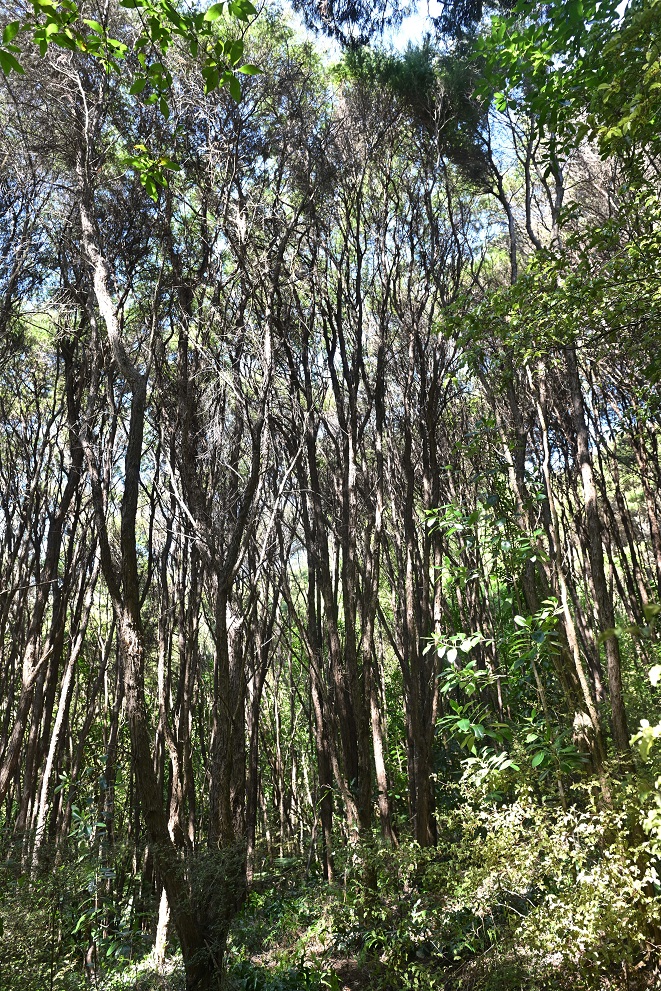
It took 20 years, but has done the job.
The rimu have been regenerating on a small scale. During the past 40 years, Peter and Anna have spotted three rimu seedlings.
Another large tree on their property, but one that has happily self-seeded, is pokaka, Eleocarpus hookerianus, a native coniferous whose glossy green leaves turn red or orange during cooler months.
Getting rid of livestock was essential.
"With the livestock here, nothing would have happened and the trees would have died."
That included taking action when wild deer escaped an adjacent property and quickly began eating the regenerating understory.
"But you got your hunter hat on," Anna reminds Peter.
"And so did some of the locals who enjoyed deer shooting. We eventually got rid of those deer."
Kānuka has been critically important, a vital "interim phase" in rewilding the Hereweka property, Shanta says.
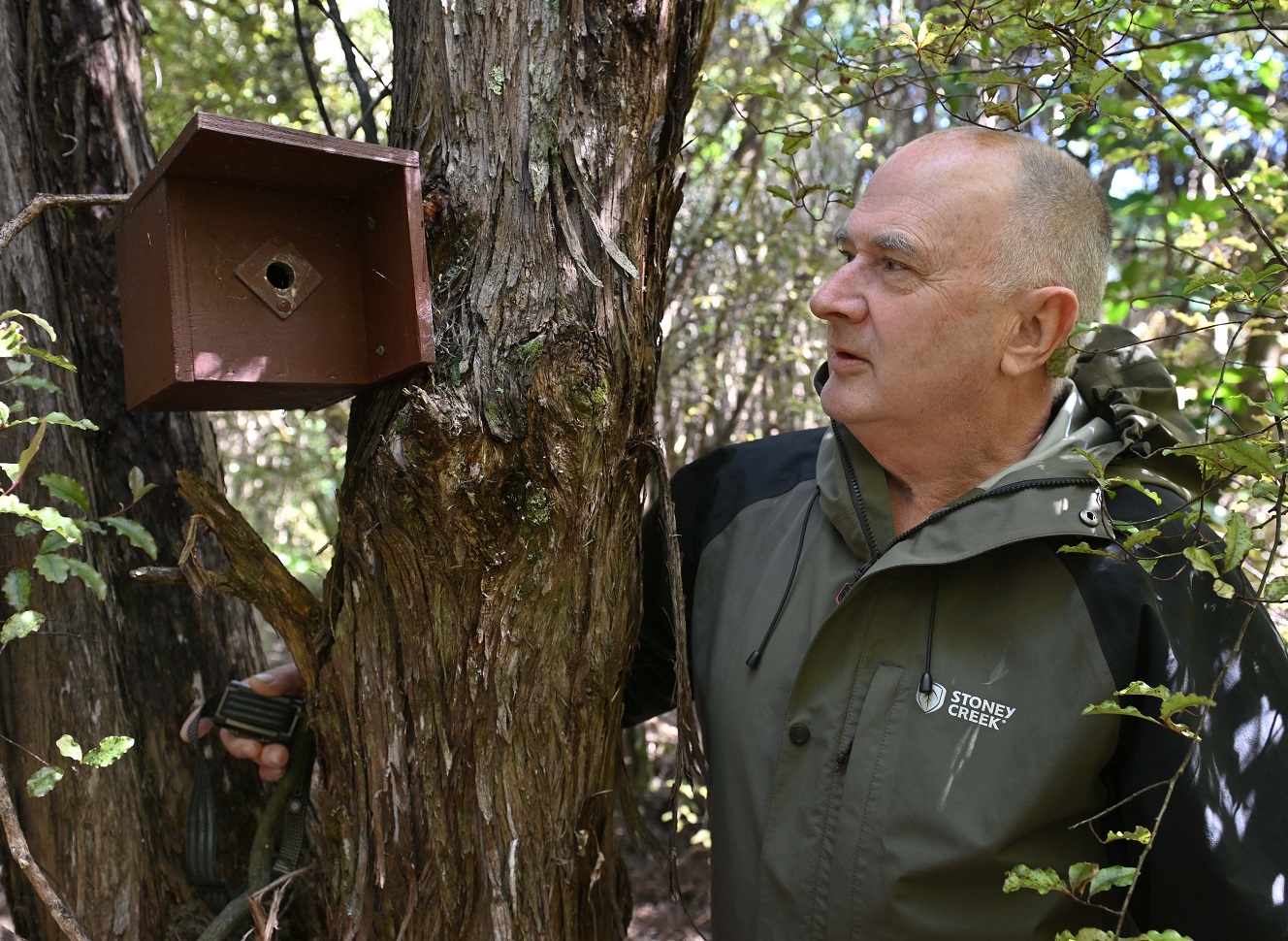
"It sows itself very thickly with very fine seed that’s windblown, so it can spread quite a distance from a stand.
"It’ll eventually overtop the grass and forms a thicket almost impenetrable to walk through once it’s five or six years old."
The lack of penetrating light suppresses the likes of grass, blackberry and gorse.
But that is only stage one of the rewilding job kānuka performs.
Kānuka can grow in clay. It then drops a lot of leaf litter, building up the topsoil so other plants have the nutrients they need to grow.
Eventually, the kānuka begins to thin out, making room for the plants growing in the soil it has helped create, Shanta explains.
"And ultimately the larger of those broadleaf species, like the lemonwood, Pittosporum eugenioides ... will grow to the height of the kānuka and take it out.
"Then other species such as totara and the other podocarps will arrive ... and produce emergent trees in that future forest.
"And kānuka will have done its job ... [in the] natural reestablishment of the forest."
Peter and Anna’s rewilded Hereweka property has become a haven for Aotearoa New Zealand’s smallest bird, the tītīpounamu.
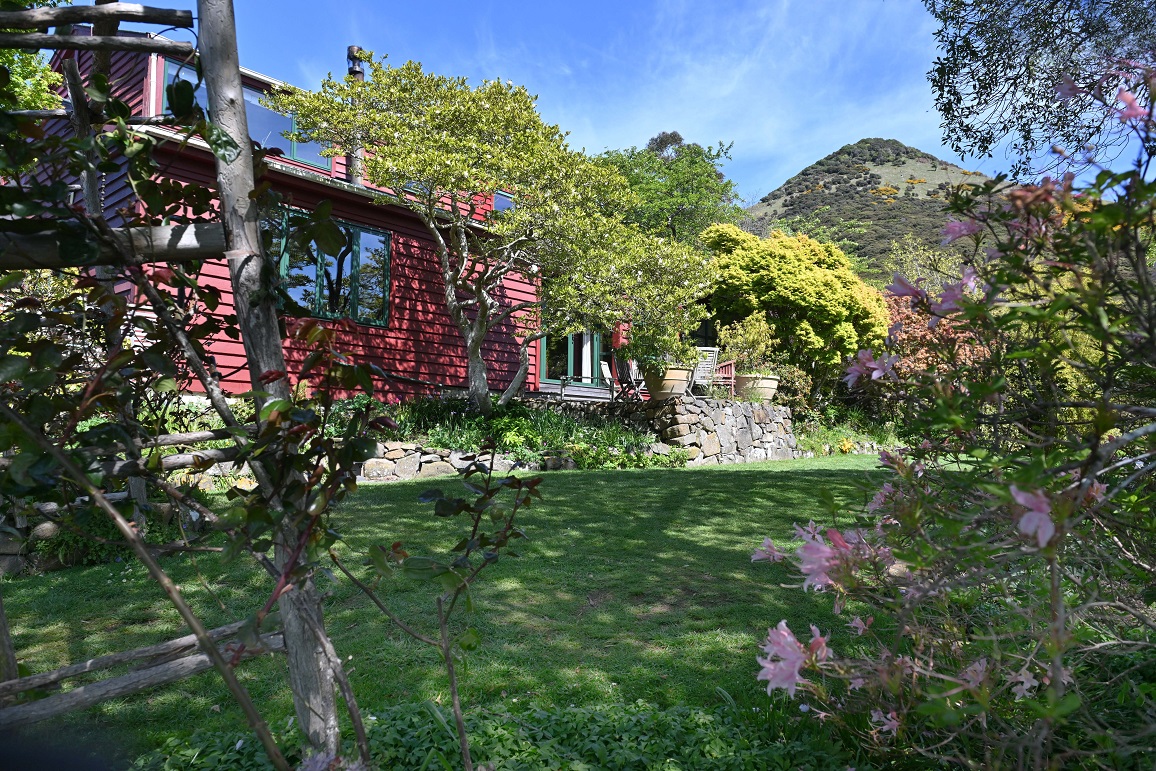
Shanta says tītīpounamu love the kānuka forest because it has lots of insects. But the birds, which are cavity nesters, cannot make their homes in stands of pure kānuka.
Shanta recognised the regenerating kānuka could become a tītīpounamu stronghold on the peninsula, but only if they offered the birds somewhere suitable to nest.
So the Otago Peninsula Biodiversity Trust, of which Shanta is a member, have built and installed 240 nesting boxes for the tītīpounamu — about half of which are on this property and surrounding land. More than 20 pairs of the birds are now nesting on Peter and Anna’s property.
"And we’re quite confident that this will give us quite a good core population of birds that will assist the population peninsula wide.
"Over time it won’t be necessary because as the forest matures, riflemen find nesting sites."
The goal is to step back; to step in for a little while and then step back.
That is in keeping with their whole philosophy and the advice they would give anyone considering rewilding their land.
"I would advise them to get rid of any stock and keep the stock out.
"If you’re in a hurry, you could plant a few things. But I would generally favour planting pioneer species like kānuka ... and then letting nature do its thing."
• Maureen Howard is the host and creator of Rewilding in Action, aired fortnightly on Otago Access Radio, 105.4 FM, and available as a podcast.











